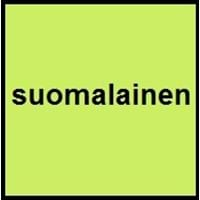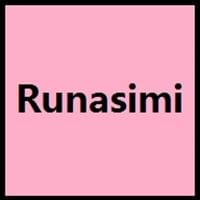Finnish and Quechua
Countries
European Union, Finland
Argentina, Bolivia, Chile, Colombia, Ecuador, Peru
National Language
Estonia, Finland, Norway, Russia, Sweden
Bolivia, Ecuador, Peru
Second Language
Estonia
Not spoken in any of the countries
Speaking Continents
Asia, Europe
South America
Minority Language
Republic of Karelia, Russian Federation, Sweden
Not spoken in any of the countries
Regulated By
Institute for the Languages of Finland
Not Available
Interesting Facts
- Finnish language has adopted many words from Iranian, Turkic, Baltic, Germanic and Slavic languages.
- In Finnish language, there are no articles or grammatical gender.
- One of the most widely spoken indigenous language in the America is Quechua.
- Quechua language has borrowed many words from Spanish.
Similar To
Estonian and Livonian Languages
Not Available
Derived From
Not Available
Not Available
Alphabets in
Finnish-Alphabets.jpg#200
Quechua-Alphabets.jpg#200
Writing Direction
Left-To-Right, Horizontal
Not Available
Language Levels
Not Available
Thank You
Kiitos
Solpayki
How Are You?
Mitä kuuluu?
Allillanchu
Good Night
hyvää yötä
Allin tuta
Good Evening
Hyvää iltaa
Wuynas nuchis
Good Afternoon
Hyvää iltapäivää
Wuynas tardis
Good Morning
Hyvää huomenta
Wuynus diyas
Please
haluta
Not Available
Sorry
Anteeksi
Pampachaykuway
I Love You
Minä rakastan sinua
Kuyayki
Excuse Me
Anteeksi
Pampachaway
Dialect 1
Colloquial Finnish
Ancash
Where They Speak
Finland
Peru
How Many People Speak
Not Available
Where They Speak
Finland, Rauma
Peru
How Many People Speak
Not Available
Where They Speak
Finland, Sweden
Peru
Speaking Population
Not Available
Second Language Speakers
Not Available
Native Name
suomi / suomen kieli
Qhichwa
Alternative Names
Suomi
North La Paz Quechua
French Name
finnois
quechua
German Name
Finnisch
Quechua-Sprache
Pronunciation
[ˈsuomi]
Not Available
Ethnicity
ethnic Finns
Quechua
Language Family
Uralic Family
Quechumaran Family
Subgroup
Finno-Ugric
Andean Equatorial
Branch
Finnic
Not Available
Early Forms
Proto-Finnic language
No early forms
Standard Forms
standard Finnish
Quechua
Signed Forms
Signed Finnish
Not Available
Scope
Individual
Macrolanguage
ISO 639 6
Not Available
Not Available
Glottocode
finn1318
quec1387
Linguasphere
No data available
No data Available
Language Type
Living
Living
Language Linguistic Typology
Subject-Verb-Object
Not Available
Language Morphological Typology
Agglutinative, Synthetic
Agglutinative, Synthetic
All Finnish and Quechua Dialects
Most languages have dialects where each dialect differ from other dialect with respect to grammar and vocabulary. Here you will get to know all Finnish and Quechua dialects. Various dialects of Finnish and Quechua language differ in their pronunciations and words. Dialects of Finnish are spoken in different Finnish Speaking Countries whereas Quechua Dialects are spoken in different Quechua speaking countries. Also the number of people speaking Finnish vs Quechua Dialects varies from few thousands to many millions. Some of the Finnish dialects include: Colloquial Finnish, Rauma. Quechua dialects include: Ancash , Huánuco. Also learn about dialects in South American Languages and North American Languages.
Finnish and Quechua Speaking population
Finnish and Quechua speaking population is one of the factors based on which Finnish and Quechua languages can be compared. The total count of Finnish and Quechua Speaking population in percentage is also given. The percentage of people speaking Finnish language is Not Available whereas the percentage of people speaking Quechua language is 0.13 %. When we compare the speaking population of any two languages we get to know which of two languages is more popular. Find more details about how many people speak Finnish and Quechua on Finnish vs Quechua where you will get native speakers, speaking population in percentage and native names.
Finnish and Quechua Language Codes
Finnish and Quechua language codes are used in those applications where using language names are tedious. Finnish and Quechua Language Codes include all the international language codes, glottocodes and linguasphere.





